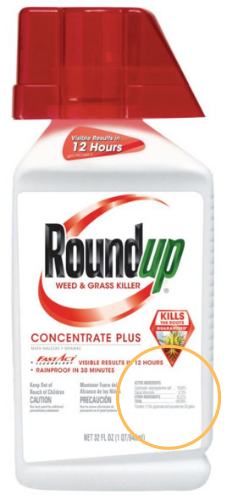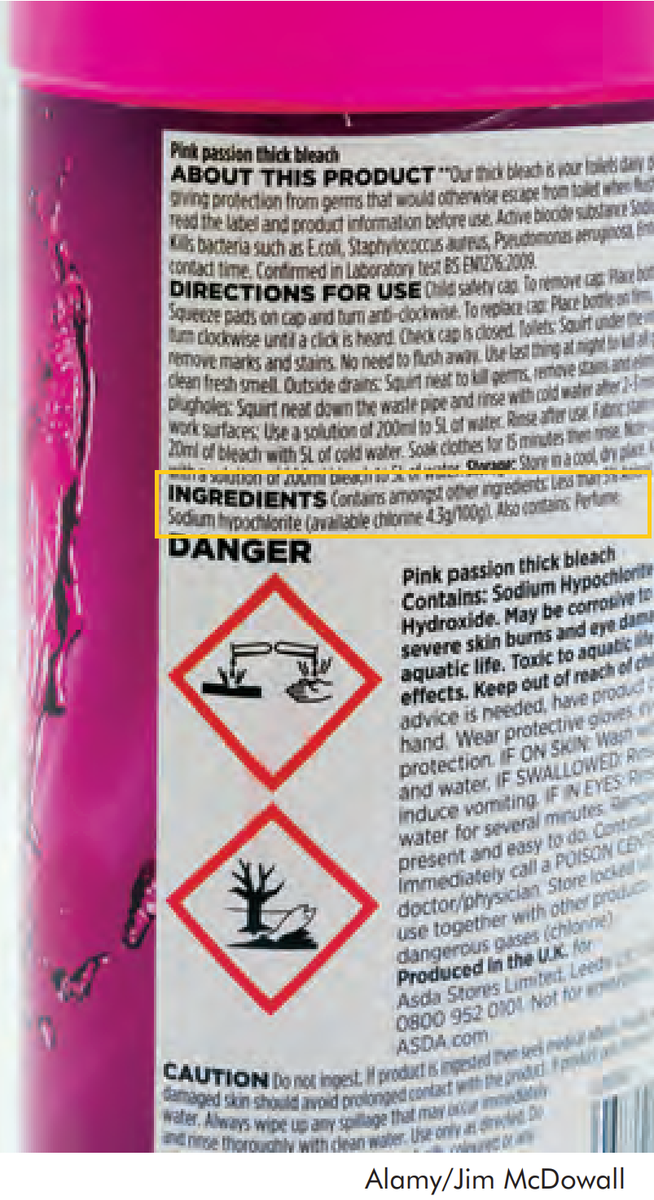Gateway on Pesticide Hazards and Safe Pest Management
How To Find Ingredients in Pesticide Products
Beyond Pesticides offers resources below to evaluate the health and ecological effects of specific chemical exposure from ACTIVE INGREDIENTS in pesticide products, as well as regulatory information and supporting scientific documents. Because various pesticide products can contain more than one active ingredient, it is important to READ the LABEL to determine chemical components.
With 192 different active ingredients and counting, it is essential to establish the connection between the use of these chemicals and their respective hazards.
View the step-by-step guide on how to search for the active ingredient(s) in pesticide products below:
- Go to U.S. EPA's Pesticide Product and Label System and enter the product name. The generic product name may vary.
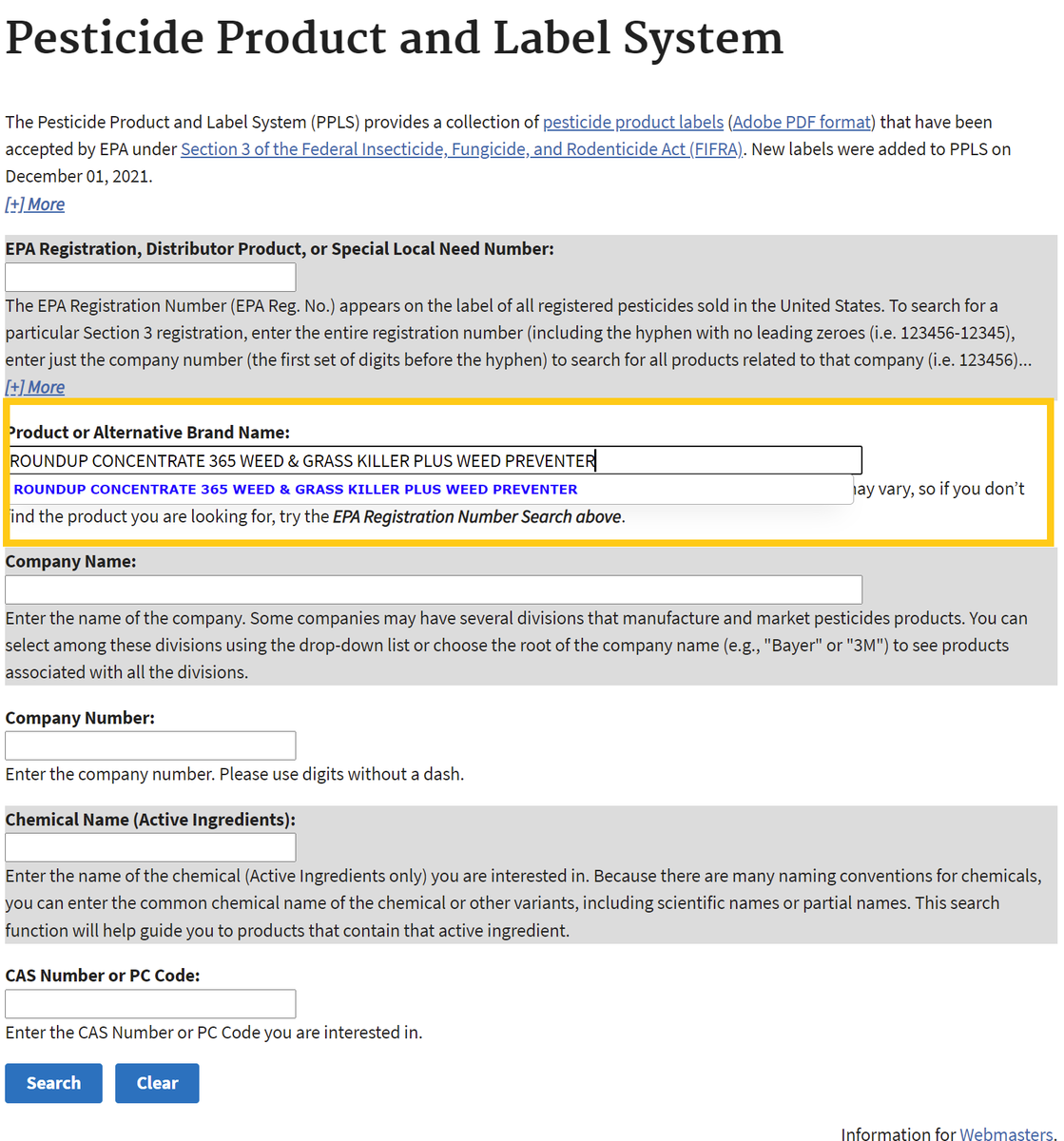
- After searching, click on the chemical ingredients tab or the link for the most recent label to find Active Ingredients.
Chemical List Label List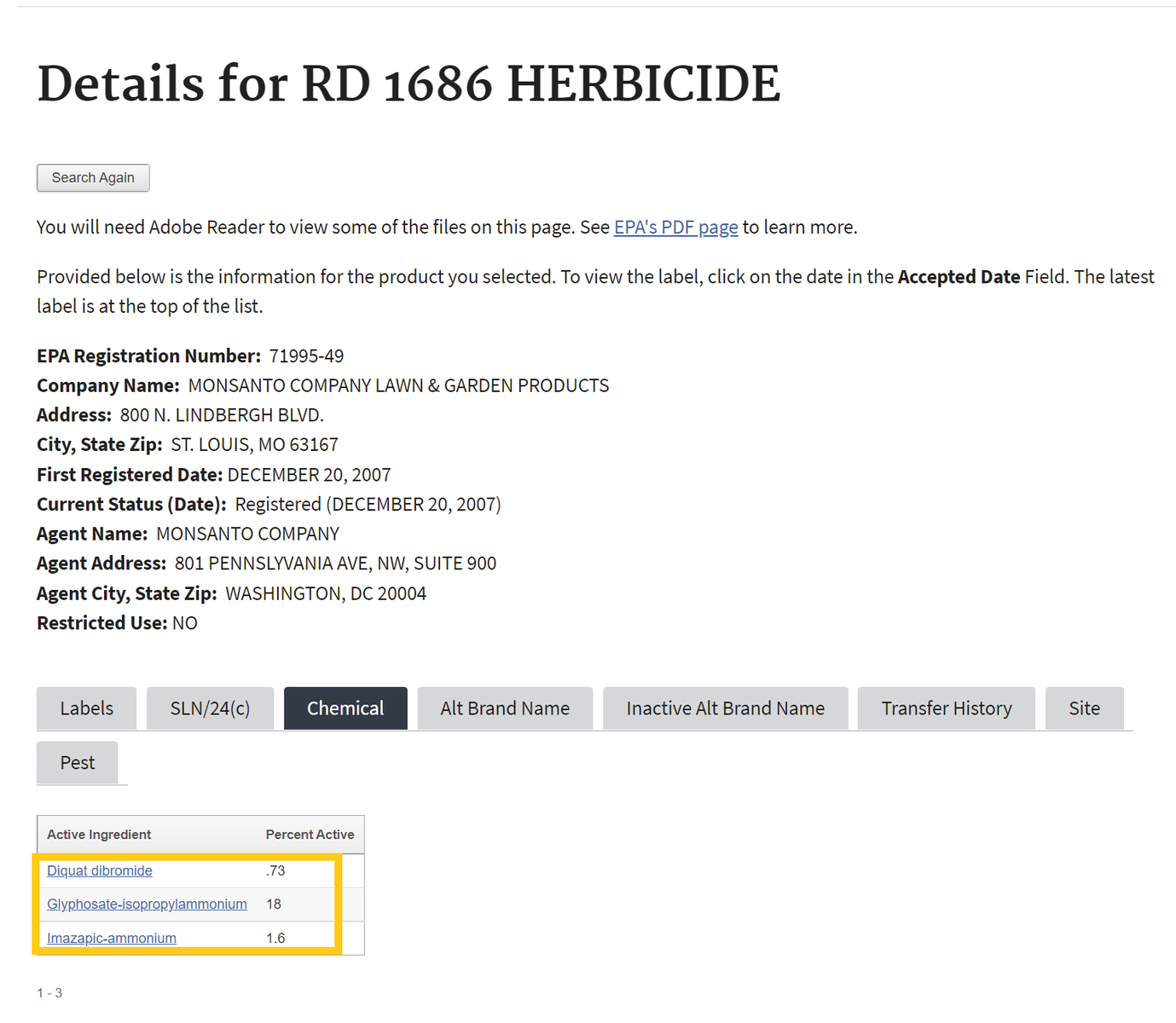
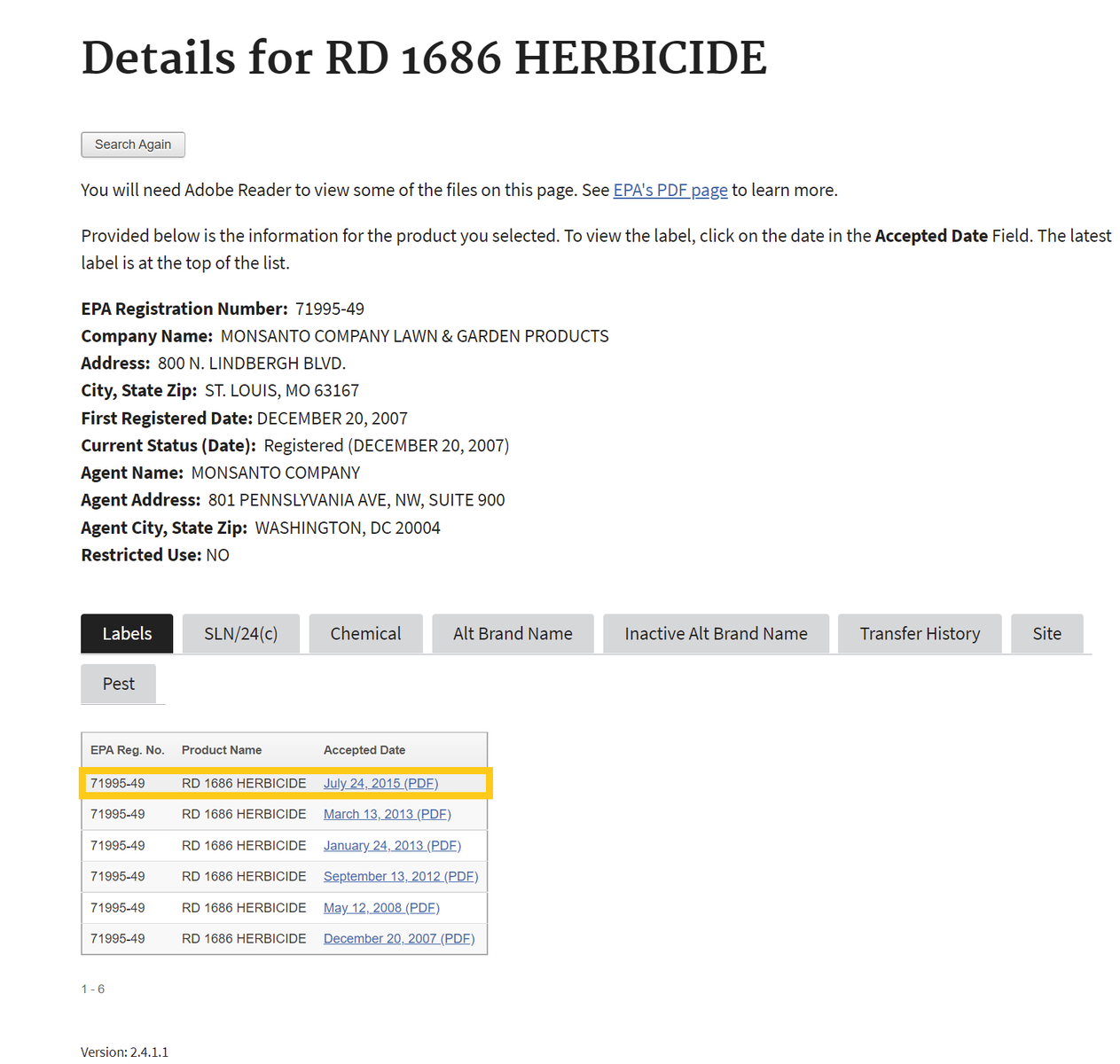
If one selects the chemical ingredients tab, skip to Step 4 . If not, proceed to step number 3 - To find the active ingredient(s) on the label, search for the page in the document containing the date of registration. Usually, the active ingredients section occurs within the first few pages of the label document.
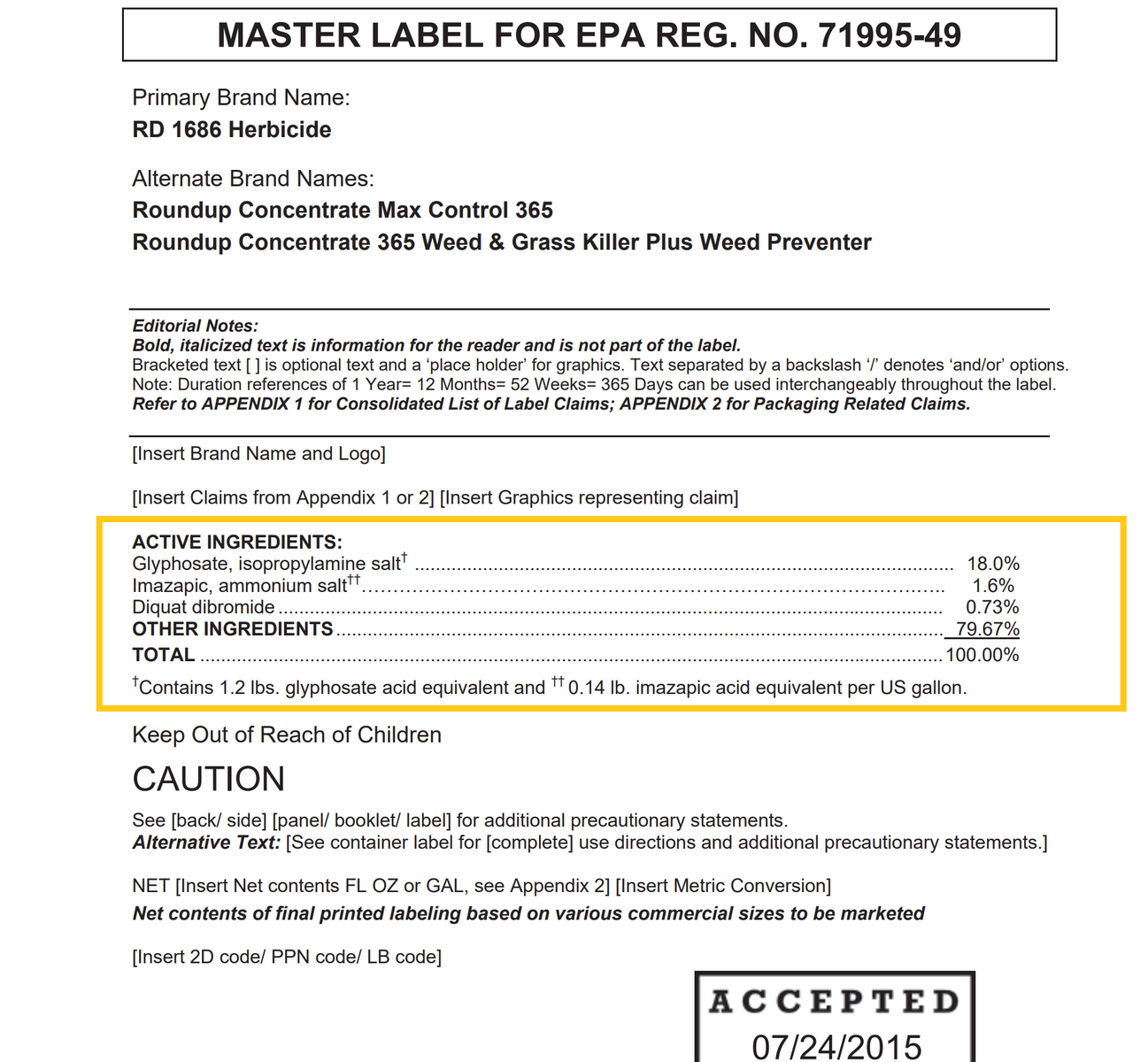
- Return to the Beyond Pesticides Gateway and search for the active ingredient name in the yellow box to the right or from the list below.
Flupyradifurone
General Information
- Product Names:
- Chemical Class: Butenolide insecticide
- Uses: Used as a systemic insecticide to control piercing and sucking insect pests, such as aphids and whiteflies, on a wide range of crops including fruits, vegetables, and cotton.
- Alternatives: Organic Agriculture
- Beyond Pesticides rating: Toxic
Health and Environmental Effects
- Cancer: Not documented
- Endocrine Disruption: Not documented
- Reproductive Effects: Not documented
- Neurotoxicity: Not documented
- Kidney/Liver Damage: Yes (27)
- Sensitizer/ Irritant: Yes (27)
- Birth/Developmental: Not documented
- Detected in Groundwater: Not documented
- Potential Leacher: Not documented
- Toxic to Birds: Not documented
- Toxic to Fish/Aquatic Organisms: Yes (27)
- Toxic to Bees: Yes (27)
Additional Information
- Regulatory Status:
- Supporting information:
- NIH PubChem Database (National Library of Medicine)
- Studies:
- Bees under interactive stressors: the novel insecticides flupyradifurone and sulfoxaflor along with the fungicide azoxystrobin disrupt the gut microbiota of honey bees and increase opportunistic bacterial pathogens. Al Naggar, Y., Singavarapu, B., Paxton, R.J. and Wubet, T., 2022. Science of The Total Environment, 849, p.157941.
- Field rates of Sivanto™ (flupyradifurone) and Transform® (sulfoxaflor) increase oxidative stress and induce apoptosis in honey bees (Apis mellifera L.). Chakrabarti P, Carlson EA, Lucas HM, Melathopoulos AP, Sagili RR (2020) Field rates of Sivanto™ (flupyradifurone) and Transform® (sulfoxaflor) increase oxidative stress and induce apoptosis in honey bees (Apis mellifera L.). PLOS ONE 15(5): e0233033. https://doi.org/10.1371/journal.pone.0233033
- Exposure to the novel insecticide flupyradifurone impairs bumblebee feeding motivation, learning, and memory retention. Siviter, Harry, and Felicity Muth. “Exposure to the novel insecticide flupyradifurone impairs bumblebee feeding motivation, learning, and memory retention.” Environmental pollution (Barking, Essex : 1987) vol. 307 (2022): 119575. doi:10.1016/j.envpol.2022.119575
- Lethal and sublethal synergistic effects of a new systemic pesticide, flupyradifurone (Sivanto®), on honeybees. Tosi S. and Nieh J. C. 2019 Lethal and sublethal synergistic effects of a new systemic pesticide, flupyradifurone (Sivanto®), on honeybees Proc. R. Soc. B.28620190433 http://doi.org/10.1098/rspb.2019.0433
- Currently used and legacy pesticides in the marine atmosphere from Patagonia to Europe. Debler, F., Gandrass, J., Paul Ramacher, M. O., Koenig, A. M., Zimmermann, S., & Joerss, H. (2025). Currently used and legacy pesticides in the marine atmosphere from Patagonia to Europe. Environmental pollution (Barking, Essex : 1987), 373, 126175. Advance online publication. https://doi.org/10.1016/j.envpol.2025.126175
- Single and combined exposure to ‘bee safe’ pesticides alter behaviour and offspring production in a ground-nesting solitary bee (Xenoglossa pruinosa). Rondeau, S. and Raine, N. (2024) Single and combined exposure to ‘bee safe’ pesticides alter behaviour and offspring production in a ground-nesting solitary bee (Xenoglossa pruinosa), Proceedings of the Royal Society Biological Sciences. Available at: https://royalsocietypublishing.org/doi/10.1098/rspb.2023.2939.
- Do novel insecticides pose a threat to beneficial insects?. Siviter Harry and Muth Felicity 2020 Do novel insecticides pose a threat to beneficial insects?Proc. R. Soc. B.28720201265 http://doi.org/10.1098/rspb.2020.1265
- Urinary pesticide biomarkers from adolescence to young adulthood in an agricultural setting in Ecuador: Study of secondary exposure to pesticides among children, adolescents, and adults (ESPINA) 2016 and 2022 examination data. Parajuli, R. et al. (2025) Urinary pesticide biomarkers from adolescence to young adulthood in an agricultural setting in Ecuador: Study of secondary exposure to pesticides among children, adolescents, and adults (ESPINA) 2016 and 2022 examination data, Data in Brief. Available at: https://www.sciencedirect.com/science/article/pii/S2352340925006067.
- Acute oral toxicity, apoptosis, and immune response in nurse bees (Apis mellifera) induced by flupyradifurone. Gao J, Guo Y, Chen J, Diao Q-Y, Wang Q, Dai P-L, Zhang L, Li W-M and Wu Y-Y (2023) Acute oral toxicity, apoptosis, and immune response in nurse bees (Apis mellifera) induced by flupyradifurone. Front. Physiol. 14:1150340. doi: 10.3389/fphys.2023.1150340








.png)
